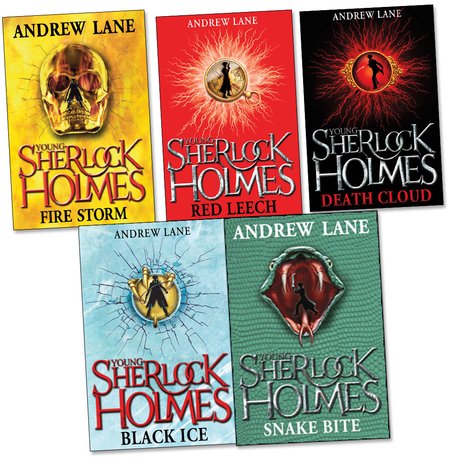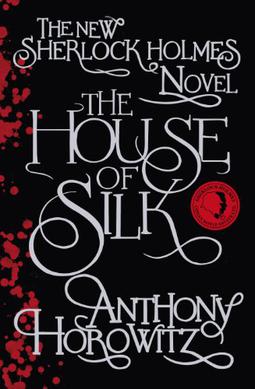Fans were Sherlocked, so to speak, long before Benedict Cumberbatch portrayed the "high-functioning sociopath" on the popular BBC show. Sherlock Holmes made his first appearance in A Study in Scarlet written by Arthur Conan Doyle and published in London in 1887. Since that time legions of mystery aficionados have been captivated by the Baker Street detective and his powers of deduction.
 |
| Holmes first appeared on December 1, 1887 |
 At this time I feel that it is only fair to mention that Doyle did not originate the idea of a highly intelligent and observant detective using his powers of deduction to solve a crime. No offense to the esteemed author across the pond, but Edgar Allen Poe invented the modern detective story when he wrote The Murders in the Rue Morgue in 1841. Not only was The Murders in the Rue Morgue the first "locked-room" mystery, but Poe's scholarly and analytical detective, C. Augustus Dupin, bares more than a slight resemblance to Sherlock Holmes.
At this time I feel that it is only fair to mention that Doyle did not originate the idea of a highly intelligent and observant detective using his powers of deduction to solve a crime. No offense to the esteemed author across the pond, but Edgar Allen Poe invented the modern detective story when he wrote The Murders in the Rue Morgue in 1841. Not only was The Murders in the Rue Morgue the first "locked-room" mystery, but Poe's scholarly and analytical detective, C. Augustus Dupin, bares more than a slight resemblance to Sherlock Holmes. Okay, back to Sherlock because, even though Poe's detective came first, C. Augustus Dupin does not really roll off the tongue like Sherlock Holmes. Also, Poe only wrote three short stories featuring Dupin compared to Doyle's Sherlock Holmes canon consisting of four novels and fifty-six short stories.
 Of course, the notoriety of Sherlock Holmes extends far beyond the original books and stories. You could never read a single word penned by Arthur Conan Doyle and still identify a calabash pipe and deerstalker cap as belonging to Sherlock Holmes. Interesting side note: The calabash pipe (the long, curved bowl kind) and deerstalker cap never appeared in any of the initial Holmes mysteries.
Of course, the notoriety of Sherlock Holmes extends far beyond the original books and stories. You could never read a single word penned by Arthur Conan Doyle and still identify a calabash pipe and deerstalker cap as belonging to Sherlock Holmes. Interesting side note: The calabash pipe (the long, curved bowl kind) and deerstalker cap never appeared in any of the initial Holmes mysteries.These iconic items may not appear in Doyle's original stories but they do look quite dashing in movies and on television. It is not incredibly surprising that Sherlock Holmes is the most filmed character of all time. The more recent movies starring Robert Downey Jr. as well as the television series, Elementary and Sherlock, depict the famous detective as highly erratic (bordering on insane) and definitely sexier than the the Holmes described by Doyle.
 |
| Basil Rathbone |
Here is Basil Rathbone as Sherlock Holmes and Nigel Bruce as Dr. Watson
in what is probably the most famous Holmes mystery,
The Hound of the Baskervilles
I cannot write about Sherlock Holmes movies without bringing up Young Sherlock Holmes which came out in 1985. This was one of my favorite movies growing up and, ooohhh, I thought that Nicholas Rowe was so dreamy in the title role. It may not be the greatest movie ever made but Young Sherlock Holmes is fun and you can actually watch it with your kids. Well, at least with older kids since there are a few scary moments.
 Speaking of a teenage Sherlock Holmes there are several outstanding book series featuring the famous detective during his youth. The most notable is The Young Sherlock Holmes series (unrelated to the film) by Andrew Lane. I have read the first two books in this series, Death Cloud and Rebel Fire, and both were a blast to read with plenty of action to keep tweens and teens entertained. Lane's take on a 14 year old Holmes is a creative and fun introduction to the character for kids not quite ready to tackle Doyle. I happen to love the writing of Arthur Conan Doyle, but it was written over a century ago so it will probably come across as a bit staid and cumbersome to a younger reader.
Speaking of a teenage Sherlock Holmes there are several outstanding book series featuring the famous detective during his youth. The most notable is The Young Sherlock Holmes series (unrelated to the film) by Andrew Lane. I have read the first two books in this series, Death Cloud and Rebel Fire, and both were a blast to read with plenty of action to keep tweens and teens entertained. Lane's take on a 14 year old Holmes is a creative and fun introduction to the character for kids not quite ready to tackle Doyle. I happen to love the writing of Arthur Conan Doyle, but it was written over a century ago so it will probably come across as a bit staid and cumbersome to a younger reader.Currently I am completely enthralled with the Sherlock, Lupin, & Me books by Irene Adler. Ok, if you are familiar at all with Sherlock Holmes (especially the Robert Downey Jr. movies and the show Elementary) you probably recognize Irene Adler as the detective's love interest. In the original stories Sherlock had no interest in romance. There was an Irene Adler, but Holmes merely admired her intellect since she actually managed to challenge him in a battle of wits.. Anyways, Sherlock, Lupin, & Me is a juvenile mystery series written by Pierdomenico Baccalario and Alessandro Gatti from the perspective of the fictional Irene Adler. In the first book, The Dark Lady, 12 year old Irene is vacationing on an island when she befriends a young Sherlock Holmes and Arsene Lupin.
 The character Arsene Lupin, the gentlemen thief, was created by Maurice Leblanc in the early 1900s. Leblanc actually wrote a story in which Lupin meets Holmes in the short story, Sherlock Holmes Arrives Too Late, in 1906.
The character Arsene Lupin, the gentlemen thief, was created by Maurice Leblanc in the early 1900s. Leblanc actually wrote a story in which Lupin meets Holmes in the short story, Sherlock Holmes Arrives Too Late, in 1906. Naturally, a mystery soon presents itself that the three friends must use their ingenuity and cunning to solve. I am kind of obsessed with this series right now. I am such a book geek, so I love the mash up of the different historical literary characters and the mysteries in them are incredibly clever. The books also include lots of amazing illustrations that look like they were copied straight from a Victorian era magazine.
 Ok, this is the last series for kids that I am going to talk about and Sherlock Holmes does not even play a pivotal role. The main character (and detective) is Sherlock's little sister Enola Holmes. The Enola Holmes Mysteries are written by Nancy Springer and are perfect for girls that have graduated from Nancy Drew. It is hard not to root for the precocious and resourceful Enola who is just as clever, if not more so, than her two older brothers, Mycroft and Sherlock.
Ok, this is the last series for kids that I am going to talk about and Sherlock Holmes does not even play a pivotal role. The main character (and detective) is Sherlock's little sister Enola Holmes. The Enola Holmes Mysteries are written by Nancy Springer and are perfect for girls that have graduated from Nancy Drew. It is hard not to root for the precocious and resourceful Enola who is just as clever, if not more so, than her two older brothers, Mycroft and Sherlock.Numerous adult authors have also put their own spin on Sherlock, but until recently none had been approved by the Arthur Conan Doyle estate. I was incredibly excited when I learned that Anthony Horowitz, the author of the Alex Rider series for teens and multiple books for adults, was the first and only author to be chosen by the Doyle estate to write an original Sherlock Holmes mystery. The House of Silk was published in 2011 and, just recently, Horowitz's second Sherlock Holmes mystery, Moriarty, was released. As far as the Victorian atmosphere, the characterization, the distinct narration by Watson; Horowitz totally nailed it. However, I couldn't help feel disappointed while I read The House of Silk because the solution to the mystery was so blatantly obvious. Part of the enjoyment of reading a Sherlock Holmes mystery (or a Hercule Poirot or Miss Marple mystery for that matter) is that when it comes time for the big reveal you are completely flabbergasted by the deductive powers of the detective. Having the mystery figured out when you are only halfway through the book spoils all of the fun.
Maybe I am just a prude too, but I didn't like that Horowitz chose a plot line that read more like an episode of Criminal Minds. Not saying that horrendous crimes did not happen during that time period, but they are just not what I associate with Sherlock Holmes. Overall, The House of Silk was wonderfully written, a true homage to Doyle, but the mystery was too simplistic and crude for Sherlock Holmes.




No comments:
Post a Comment